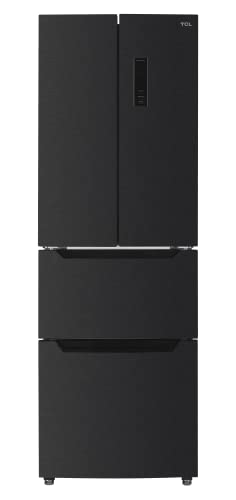The Ultimate Guide to Buying a Fridge: Making Smart Choices for Your Kitchen
When it comes to necessary kitchen appliances, couple of items are as important as a refrigerator. It is the heart of the kitchen area-- keeping your food fresh and your ingredients at ideal temperatures. However, choosing the right fridge can be a daunting job, offered the variety of designs, sizes, and innovations offered on the marketplace. This guide will provide valuable insights into the elements to consider when purchasing a fridge, typical types, and regularly asked questions to help you make an informed choice.
Key Factors to Consider When Buying a Fridge
To streamline your decision-making process, here are the core elements one ought to think about when looking to buy a fridge:
1. Size
- Kitchen Space: Measure the space in your cooking area where the fridge will be put. This includes examining doorways to ensure the fridge can be delivered without concern.
- Capability: Consider how much food you normally store. A larger home might require a fridge with a capability of 20-26 cubic feet, while smaller sized households may find 10-18 cubic feet enough.
2. Design
- Leading Freezer Refrigerators: A conventional option that features a freezer on top. They are generally more cost effective and energy-efficient.
- Bottom Freezer Refrigerators: Offers convenience by putting the refrigerator section at eye level. Ideal for those who access fresh food regularly.
- Side-by-Side Refrigerators: Provides easy access to both freezer and fresh food areas. Helpful for narrow kitchens.
- French Door Refrigerators: Combines the advantages of bottom freezers with side-by-side designs. They often include additional features such as ice and water dispensers.
- Compact Refrigerators: Perfect for small areas like dormitory or offices.
3. Energy Efficiency
- Try to find energy-efficient designs to minimize electrical energy bills. Examine the Energy Star label, which indicates that the appliance meets or surpasses energy performance standards.
- Think about the average yearly energy intake reported in kilowatt-hours (kWh).
4. Features
- Ice and Water Dispenser: Convenient for immediate access to ice and filtered water.
- Smart Technology: Some fridges come geared up with Wi-Fi connection that permits you to keep track of and adjust settings from your mobile phone.
- Adjustable Shelves and Bins: For customizable storage to accommodate tall products.
- Temperature Level Control Zones: Different areas might have various climate controls for optimal storage of various foods.
5. Rate
- Set a budget. Fridge costs can range from a few hundred to a number of thousand dollars depending on style, size, and functions.
- Consider additional expenses such as extended service warranties, shipment, and setup.
Relative Table of Popular Fridge Styles
| Fridge Style | Typical Price Range | Pros | Cons |
|---|---|---|---|
| Leading Freezer | ₤ 400 - ₤ 1,200 | Budget friendly, energy-efficient | Limited functions |
| Bottom Freezer | ₤ 900 - ₤ 2,500 | Easy access to fresh food | Can be pricey |
| Side-by-Side | ₤ 600 - ₤ 3,000 | Great company, easy gain access to | Freezer space can be restricted |
| French Door | ₤ 1,200 - ₤ 4,000 | Roomy, stylish, often feature-rich | Higher price point |
| Compact | ₤ 150 - ₤ 600 | Space-saving, portable | Minimal storage capacity |
Often Asked Questions (FAQs)
1. For how long do fridges typically last?
Typically, a properly maintained refrigerator can last around 10 to 20 years. Regular maintenance, such as cleaning the coils and checking door seals, can lengthen its life expectancy.
2. How can I preserve my fridge effectively?
- Keep the coils tidy to assist maintain energy effectiveness.
- Guarantee that the door seals are tight to prevent cold air from leaving.
- Frequently defrost (if applicable) and clean the interior to prevent accumulation of bacteria and odors.
3. Do I need to spend for shipment and installation?
Most sellers charge for delivery and installation, however this cost can often be waived throughout promos. Always confirm the charges before finishing your purchase.
4. What should I do if my fridge is not cooling effectively?
Start by checking the temperature settings and ensure the vents are clear of any obstructions. If the problem continues, it might be required to consult an expert repair service.
5. How can I identify the size of the fridge I need?
As a basic standard, permit about 4 to 6 cubic feet of space per person in your family. However, Full Document can differ based upon private cooking and storage routines.
Purchasing a refrigerator may seem simple, but it requires mindful consideration of different aspects. By assessing your needs and preferences in terms of size, design, features, and energy performance, you're much better positioned to select a fridge that will serve your home well for many years to come. This guide intends to simplify the intricacies associated with fridge shopping, empowering you to make an informed decision that will boost your kitchen area experience. Whether you're upgrading or acquiring your first system, a little research can lead to a refrigerator that perfectly fits your way of life and culinary routines.

